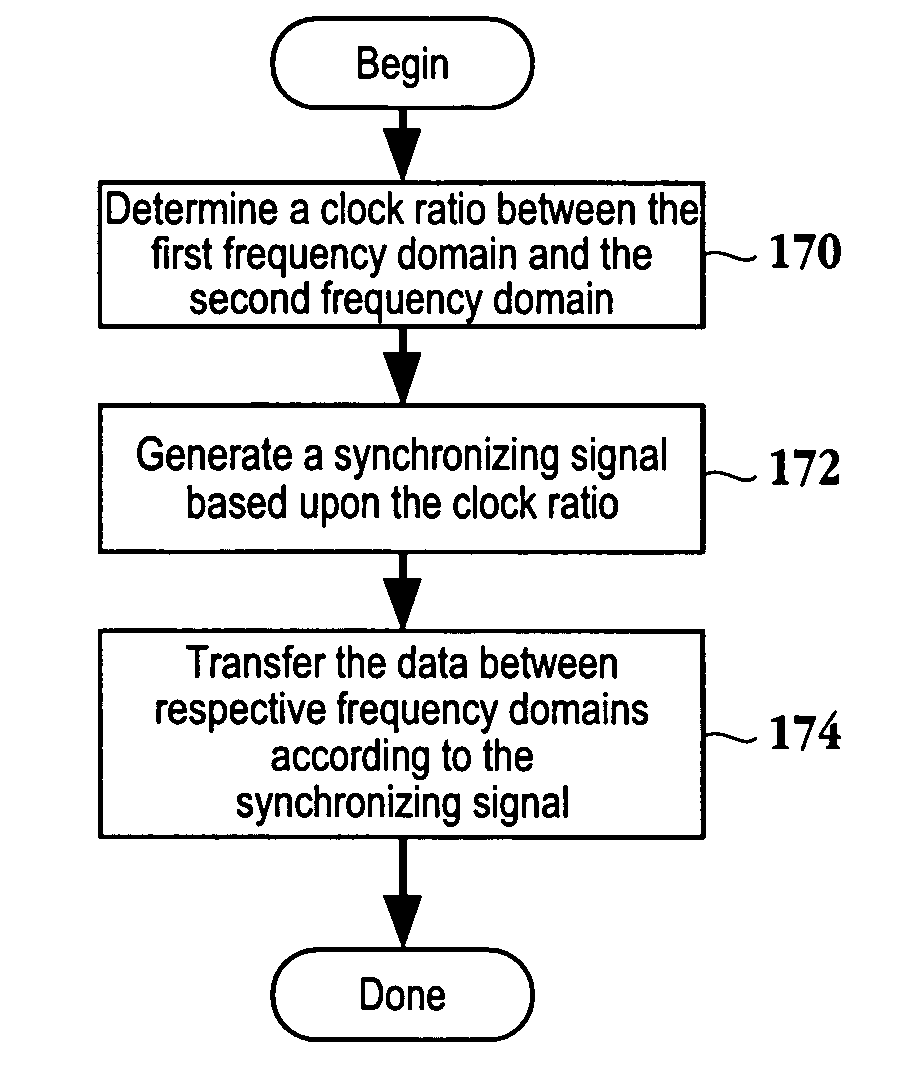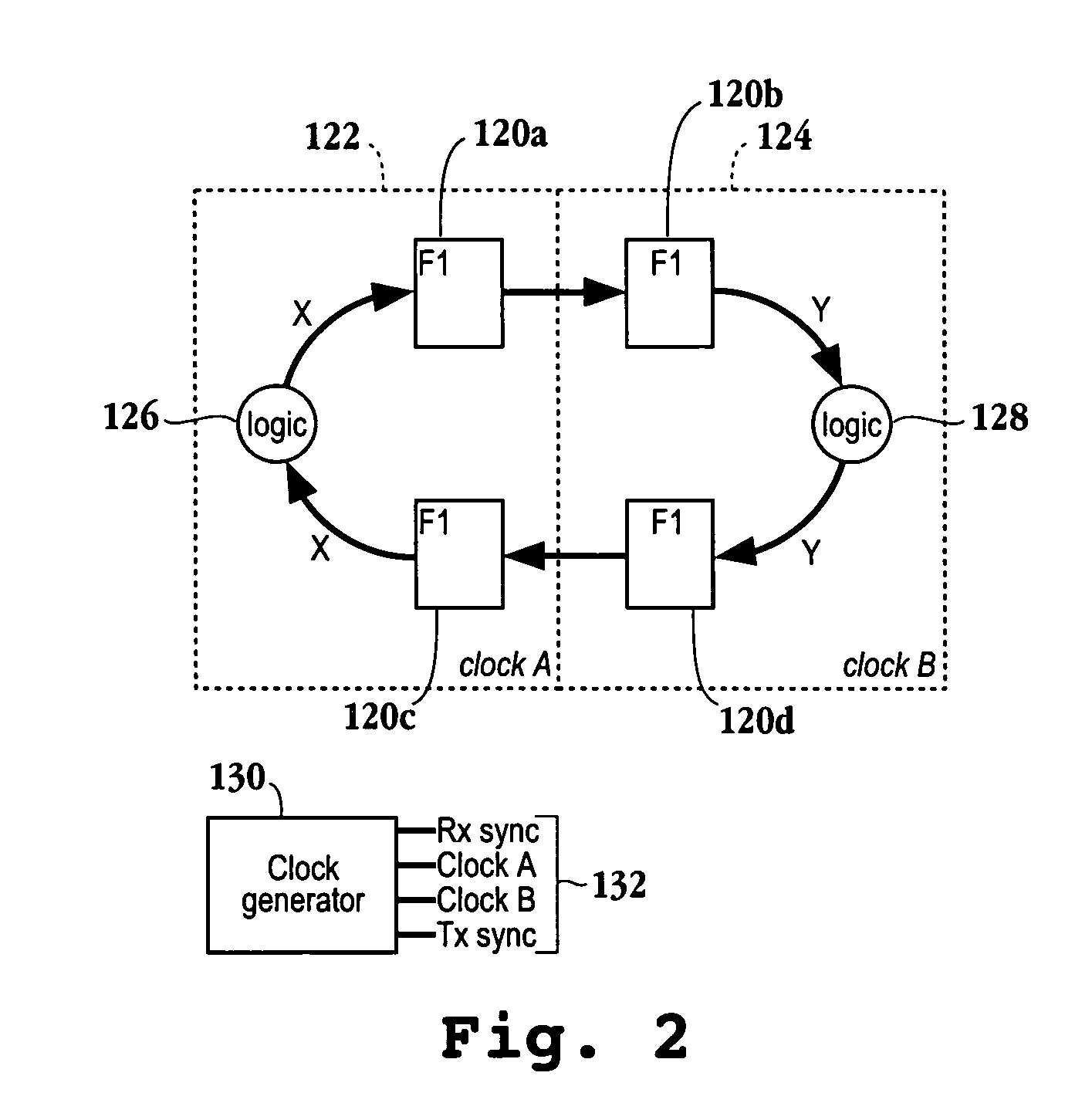Method for generating a synchronization signal based on the clock ratio between two clock domains for data transfer between the domains
a clock domain and clock domain technology, applied in the field of microprocessors, can solve the problems of failure of functional testing, chip failure, and inability to produce actual operation conditions
- Summary
- Abstract
- Description
- Claims
- Application Information
AI Technical Summary
Benefits of technology
Problems solved by technology
Method used
Image
Examples
Embodiment Construction
[0021]An invention is described for a system, device and method for efficiently transferring data across different clock frequency domains. It will be obvious, however, to one skilled in the art, that the present invention may be practiced without some or all of these specific details. In other instances, well known process operations have not been described in detail in order not to unnecessarily obscure the present invention. The term about as used to herein refers to + / −10% of the referenced value.
[0022]The embodiments of the present invention provide a system, device and method enabling the transfer of data across different clock frequencies in a deterministic manner that minimizes overhead. The deterministic manner allows for the elimination of special test circuitry that forces the clocks frequencies to act in a certain manner during system debug, e.g., scan testing. Accordingly, the system or chip behaves in the same manner during debug operations as during functional perform...
PUM
 Login to View More
Login to View More Abstract
Description
Claims
Application Information
 Login to View More
Login to View More - R&D
- Intellectual Property
- Life Sciences
- Materials
- Tech Scout
- Unparalleled Data Quality
- Higher Quality Content
- 60% Fewer Hallucinations
Browse by: Latest US Patents, China's latest patents, Technical Efficacy Thesaurus, Application Domain, Technology Topic, Popular Technical Reports.
© 2025 PatSnap. All rights reserved.Legal|Privacy policy|Modern Slavery Act Transparency Statement|Sitemap|About US| Contact US: help@patsnap.com



